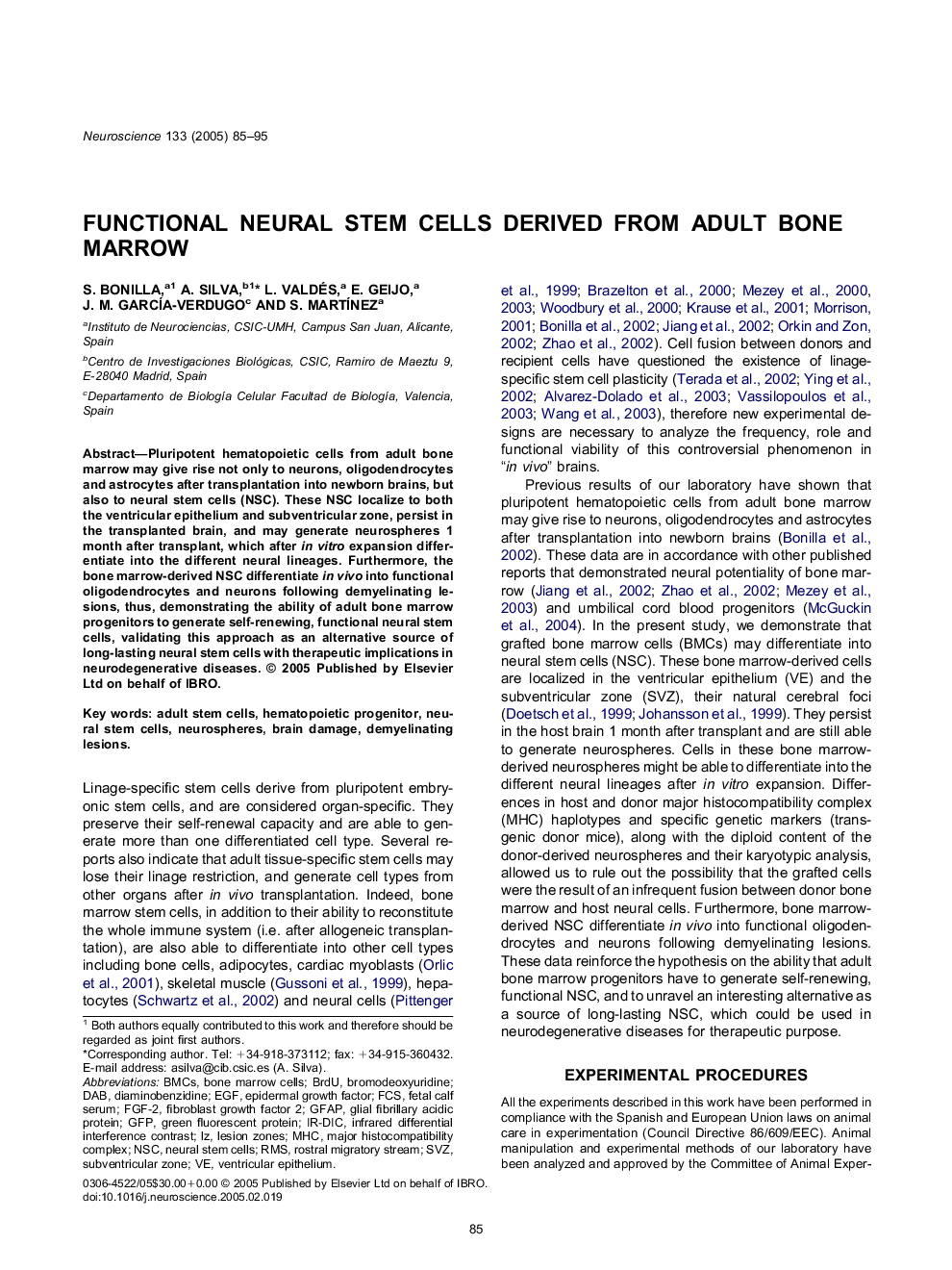| Article ID | Journal | Published Year | Pages | File Type |
|---|---|---|---|---|
| 9425431 | Neuroscience | 2005 | 11 Pages |
Abstract
Pluripotent hematopoietic cells from adult bone marrow may give rise not only to neurons, oligodendrocytes and astrocytes after transplantation into newborn brains, but also to neural stem cells (NSC). These NSC localize to both the ventricular epithelium and subventricular zone, persist in the transplanted brain, and may generate neurospheres 1 month after transplant, which after in vitro expansion differentiate into the different neural lineages. Furthermore, the bone marrow-derived NSC differentiate in vivo into functional oligodendrocytes and neurons following demyelinating lesions, thus, demonstrating the ability of adult bone marrow progenitors to generate self-renewing, functional neural stem cells, validating this approach as an alternative source of long-lasting neural stem cells with therapeutic implications in neurodegenerative diseases.
Keywords
EGFDABDemyelinating lesionsBMCsNSCSVZGFAPGFPIR-DICFGF-2RMSFCSBrdUbromodeoxyuridinerostral migratory streamdiaminobenzidinefetal calf serumAdult stem cellsBone marrow cellsNeural stem cellsBrain damageepidermal growth factorfibroblast growth factor 2MHCmajor histocompatibility complexsubventricular zoneNeurospheresGlial fibrillary acidic proteingreen fluorescent proteinHematopoietic progenitorinfrared differential interference contrast
Related Topics
Life Sciences
Neuroscience
Neuroscience (General)
Authors
S. Bonilla, A. Silva, L. Valdés, E. Geijo, J.M. GarcÃa-Verdugo, S. MartÃnez,
